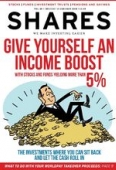Archived article
Please note that tax, investment, pension and ISA rules can change and the information and any views contained in this article may now be inaccurate.
New investment trust factsheets could be ‘misleading’

A new document required to be published by all investment trusts could be misleading to investors, according to experts.
Called the Key Information Document (KID), it is meant to help prospective investors understand the nature of a fund, the target investor base, its expected risks/returns and costs.
Introduced on 1 January 2018, the KID has actually left experts wondering if it will do more harm than good.
WHY IS THE NEW DOCUMENT CONTROVERSIAL?
Typical fund factsheets contain historic returns. That’s not allowed in the new investment trust KID. Instead, there is an illustration of the potential return under four performance scenarios: stress, unfavourable, moderate and favourable; over one, three and five years.
These scenarios are ultimately based on share price returns over the past five years. There has been a bull market for the five years since 1 January 2013, so a strong chance that many investment trusts will have done very well.
Florence Buron, a director at consultancy Deloitte, comments: ‘To assume the market is going in the same direction as the previous five years is not guaranteed as no one knows the future’. This suggests that the future scenarios in the document might not be of much use, if any.
EXAMPLES OF FUTURE SCENARIOS
Stockbroker Numis believes there are a number of flaws with KIDS that make them ‘misleading’ for investors. In particular, it says the scenarios in the KIDs often appear ‘highly optimistic’. It says: ‘For instance, Scottish Mortgage (SMT) shows five year (annual) returns of 23.1% under the moderate scenario and 10.7% per year under the unfavourable scenario.’
Scottish Mortgage has made 25.7% annualised total return over the past five years, according to Morningstar, but ‘only’ 15.3% on a 10-year basis.
HarbourVest Global Private Equity’s (HVPE) KID features data implying you could make 14.5% per year over five years under the unfavourable scenario. Baillie Gifford Japan Trust (BGFD) has 13.1% potential annual return over the same period in its unfavourable scenario.
The scenarios are created by the European Securities and Markets Authority and not by the investment trusts.
MANY UNFAVOURABLE CONDITIONS STILL IMPLY
YOU CAN MAKE A PROFIT
All the data we’ve seen for the stress scenario has a negative return, yet we believe investors may struggle to differentiate between the words ‘stress’ and ‘unfavourable’, as they both imply bad market conditions. As such, they may focus on the unfavourable scenarios with the hope that the worst case situation could still be profitable.
Indeed, we’ve seen a list containing nearly 30 investment trusts analysed by Numis which have a positive annual return under the unfavourable scenario over five years.
‘The stress scenario provides an indication that investors can lose money, but we believe it is hard for investors to gauge the likelihood of this happening, particularly for funds where
the returns are high even under the unfavourable scenario,’
adds Numis.
Ian Sayers, chief executive of the Association of Investment Companies is not happy with the future scenario set-up among other complaints. He goes as far to say that he finds himself in the odd position of being head of a trade organisation which has been ‘inundated by complaints from his members that a regulator is forcing them to overstate their performance and understate their risks.’
WHAT ELSE IS WRONG WITH THE DOCUMENT?
Other criticisms of KIDs include a lack of consistency in how costs are calculated across the sector. For instance, some funds include stamp duty as a cost but most do not (in line with the latest AIC guidance). Some seem to have excluded finance costs and performance fees, and a few show absolute figures rather than annualised, and others seem to include errors.
Also under the new regulation, investment trusts must disclose transaction costs whereas typical unit trust or OEIC funds don’t have to.
Some fear that by showing transaction costs for one type of product and not another, it may sway the decision to invest.
This may be even more galling for investment trusts due to their closed-end structure. Trust fund managers do not have to trade the portfolio when people buy and sell their shares, as opposed to an open-ended fund manager who has to buy/sell investments as investors move in/out of the fund.
Therefore it is likely that transaction costs are probably lower in an investment trust than a typical unit trust or OEIC, but if you are only shown the costs of one type of investment it is hardly transparent.
WILL INVESTORS IGNORE THE DOCUMENT?
‘The real question is to what degree the data in the KID will influence investors when buying investment trusts,’ comments Numis. ‘We believe the return scenarios in the KID are likely to be ignored by most investors, although we expect investors to continue to rely heavily on past performance (which ends up with similar results).
‘We certainly discourage anyone from interpreting the moderate scenario as the likely outcome over the next five years,’ it adds.
Numis believes there is a strong argument for the KID document to be ignored by investors. It believes many investment trust managers share this view, given the difficulty in finding the KID on many individual trust websites. (DS)
DISCLAIMER: Editor Daniel Coatsworth has a personal investment in Scottish Mortgage mentioned in this article
Important information:
These articles are provided by Shares magazine which is published by AJ Bell Media, a part of AJ Bell. Shares is not written by AJ Bell.
Shares is provided for your general information and use and is not a personal recommendation to invest. It is not intended to be relied upon by you in making or not making any investment decisions. The investments referred to in these articles will not be suitable for all investors. If in doubt please seek appropriate independent financial advice.
Investors acting on the information in these articles do so at their own risk and AJ Bell Media and its staff do not accept liability for losses suffered by investors as a result of their investment decisions.
Issue contents
Big News
- Is Mothercare a takeover target after share price slump?
- Dialight banking on new leadership
- Coal hits one-year high
- Eco Atlantic gets Exxon discovery boost
- The week in a minute
- Christmas boost for grocers
- Which UK-listed stocks are affected by US tax reform?
- Where to invest your Worldpay takeover proceeds

 magazine
magazine









